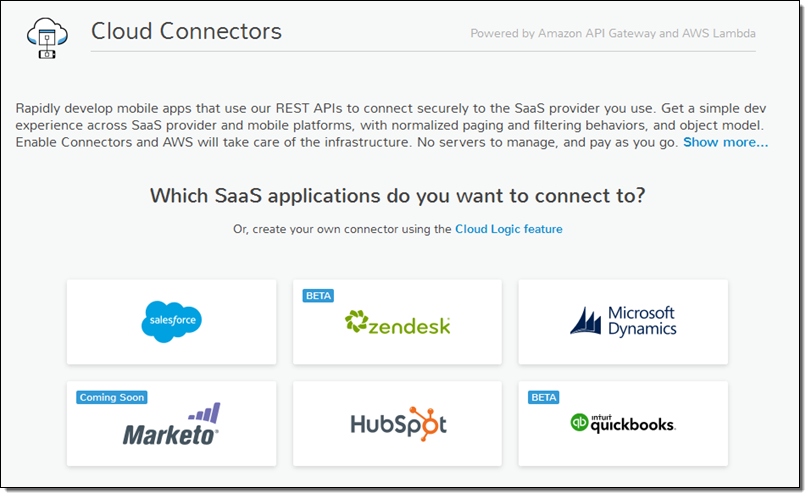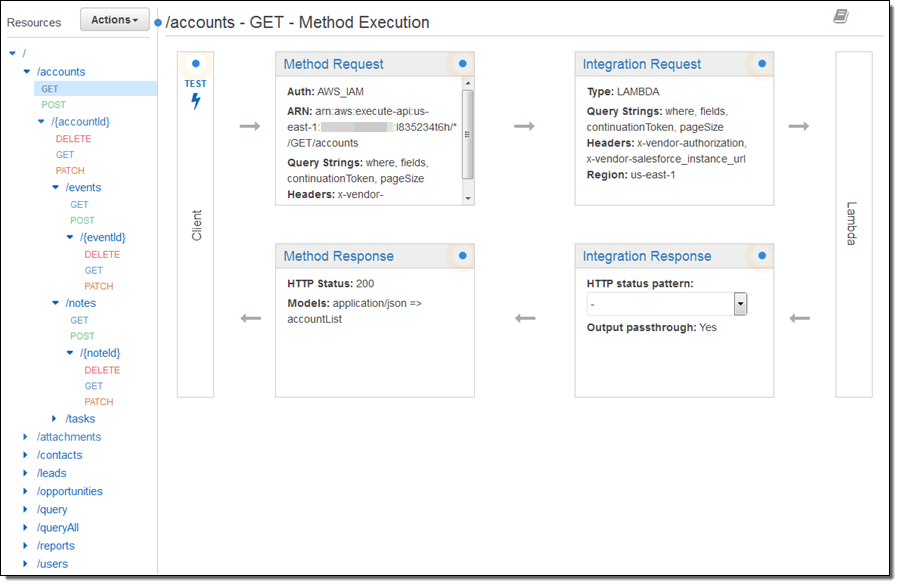AWS News Blog
Build Enterprise Mobile Apps with AWS Mobile Hub – New User Management and SaaS Integration
AWS Mobile Hub allows you to build, test, and monitor mobile applications that make use of one or more AWS services. You can use its single, integrated console to add user authentication, data storage, backend logic, push notifications, content delivery, and analytics features to your apps, with plenty of opportunities for customization.
We are seeing an increasing number of developers take on the challenges of enterprise mobility. They want to build B2C (business to consumer) and B2E (business to employee) applications that are as powerful, flexible, and secure as their existing desktop app. They want to use their existing corporate user directories, and they want to tap in to existing CRM, sales management, accounting, and customer service tools.
Today we are extending Mobile Hub with support for new SaaS integration features that will be of special interest to developers who are building these types of apps. These new features are a followup to our recent launch of support for the use of AWS Lambda functions and Amazon API Gateway endpoints to add Enhanced Cloud Logic to your applications for building custom connectors. Both features work together with recently launched enterprise user management capabilities to authenticate app users.
Enterprise User Management
We recently added new features that make it easier for you to add user authentication for your B2C and B2E apps.
On the B2C side you can create your own fully managed directory in Amazon Cognito and then add sign-up and sign-in features, including multi-factor authentication (MFA). On the B2E side, you can allow users to sign in using their exist corporate credentials. This feature makes use of SAML (Security Assertion Markup Language) and works with multiple directories including Active Directory. To learn more, read Introducing Mobile Hub User Authentication Using SAML Federation or Email and Password Sign-in.
When you make use of either of these sign-in features, AWS Identity and Access Management (IAM) roles are automatically assigned to each user. You can use these credentials to gain access to AWS resources and the new Mobile Hub connectors described below.
SaaS Integration
Many B2C and B2E apps need to access data that is stored within enterprise SaaS applications. Our new Mobile Hub connectors allow you to build apps that access commonly used objects (Accounts, Contacts, Leads, and so forth) across Salesforce, Microsoft Dynamics, Marketo, HubSpot, Zendesk, and QuickBooks. You can also run queries that access and retrieve custom objects from these applications.

The connectors take the form of REST microservices that are implemented as AWS Lambda functions and accessed through Amazon API Gateway, making them easy to configure and run. To get started, you simply click on the desired connector and enter your credentials:

Calls to the connectors are routed through API Gateway to the underlying SaaS application. This model allows you to audit and meter calls, throttle requests to the SaaS application, and cache responses. The connectors normalize the SaaS applications and provide you with uniform, consistent objects within a category (CRM, marketing automation, customer support, and so forth). We’ve provided Swagger 2.0 definitions for all of the REST APIs and reference mobile apps for each SaaS application.
Behind the scenes, creating a connector starts a process that uses a AWS CloudFormation template that sets up the IAM roles, API definitions, and Lambda functions. Here’s the API definition for the Salesforce connector:

You can also build your own custom connectors using Mobile Hub’s Cloud Logic features and gain all of the benefits that I just listed. Your connector can make use of fine-grained access control; for example, you can restrict operations like PUT, POST, and DELETE on specific resource paths to a limited set of app users.
To learn more and to see the full list of connectors, visit the AWS Mobile Hub Developer Guide.
Available Now
These new features are available now and you can start using them today!
— Jeff;